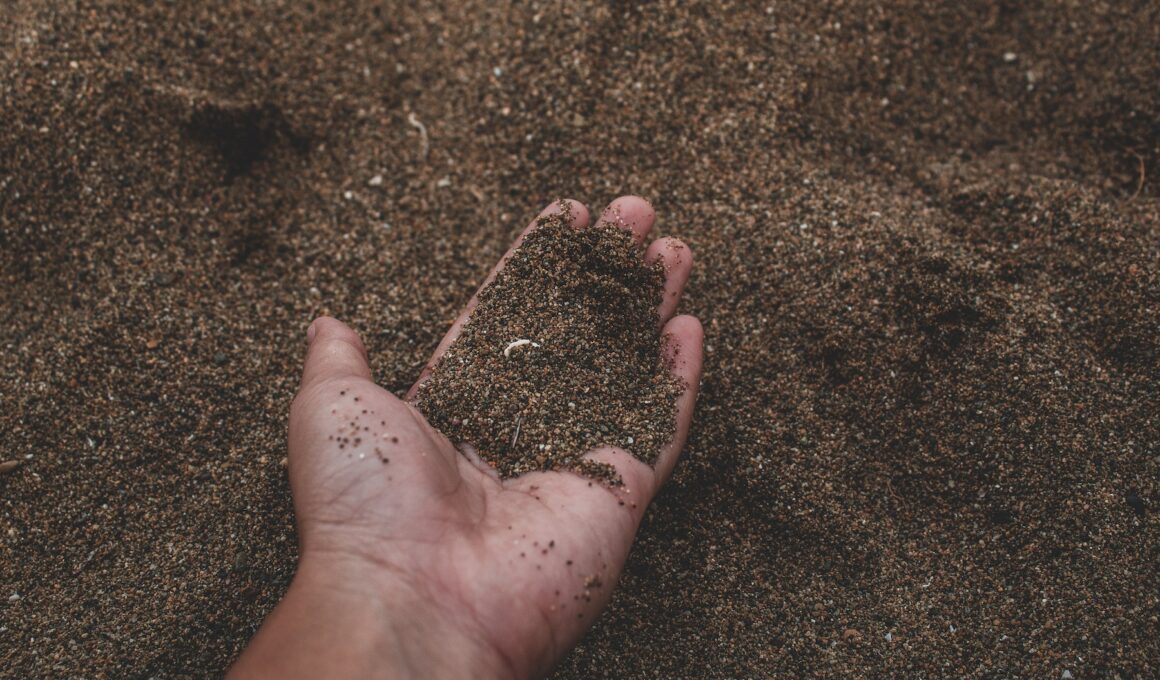Quick Summary
- Evaluate the current state of the yard, including soil type, sun exposure, and pests, before deciding on a ground cover option.
- Consider low-maintenance alternatives like mulch, gravel, or artificial grass to minimize the need for ongoing care and maintenance.
- Prepare the ground by conducting soil testing, implementing pest control measures, and either planting grass seed or laying sod.
- Artificial turf offers several benefits such as being non-abrasive, allergen-free, and aesthetically pleasing, while also eliminating the need for water, mowing, fertilizers, and pesticides.
Evaluate Your Yard
Before you can transform that dirt pile into a backyard oasis, you’ve got to take a good, hard look at your yard’s current state. You’ll need to assess the type of soil you have, how much sun your yard gets, and whether there are any pests that could derail your plans. One crucial step you can’t afford to skip is soil testing. This will help you understand what kind of soil you’re dealing with and whether it’s suitable for the type of ground cover you’re planning. Not only does soil testing ensure you’re putting your time and resources to the best use, but it also guarantees your safety. You wouldn’t want to plant something that could potentially harm you or your family, would you? Pest control is another essential aspect to consider. Even if you don’t see any signs of pests, it’s always better to be safe than sorry. A pest control professional can help you identify any potential threats and come up with a plan to keep them at bay. So, before you start covering that dirt in your backyard, make sure you’ve done your homework. It’ll surely pay off in the end.Consider Your Budget and Time Commitment
Imagine the joy you’ll feel when you transform that barren space into a lush haven, but remember, it’s essential to realistically assess your resources and how much work you’re willing to put in. Before diving headfirst into your backyard transformation project, sit down and sketch out your financial limitations and time availability. You can use Budgeting Tools to track your spending, ensuring you aren’t overspending on materials or services. Also, Time Management can play a crucial role; you’ll need to balance your regular tasks and commitments with the time needed to complete the project. Here are a few things to consider:- How much are you willing to spend on materials and labor?
- Do you have the time to maintain a lush, high-maintenance garden?
- What is the cost of professional help if you need it?
- How much time can you realistically allocate to the project weekly?
- Can you afford any unexpected costs that might arise?
Choose Your Ground Cover
Choosing your ground material is a key decision in your garden transformation. There’s a multitude of options available, so it’s important to choose one that will not only meet your covering aesthetics but also provide ground cover benefits. Safety is a top priority when considering ground cover. You want something that’s safe for kids and pets, but also attractive. Mulch, for example, is a popular choice. It’s soft underfoot, reduces soil erosion, and helps retain moisture. Plus, it comes in various colors to match your garden’s aesthetic. Grass is another safe option. It’s soft, easy to maintain, and can handle a lot of foot traffic. Plus, it adds a vibrant and refreshing look to your backyard. For a low-maintenance alternative, consider artificial grass. It’s safe, durable, and it maintains its lush green appearance all year round. Pebbles or gravel can also be used to cover dirt. They’re durable, require little maintenance, and add a unique texture to your backyard. However, they can be a bit hard underfoot, so they might not be the best choice if you have young children or pets. Remember, the best ground cover for your backyard depends on your specific needs and preferences. Choose wisely to ensure a safe and aesthetically pleasing garden.Prepare the Ground
Once you’ve settled on the perfect ground material, it’s time to roll up your sleeves and start preparing the ground for your garden transformation. Preparation is key to ensuring a successful and safe backyard makeover. The first order of business is soil testing. This will help you understand the condition of your soil and know what amendments it may need. You can purchase a soil testing kit from your local garden store or online. The kit will guide you in collecting soil samples and interpreting the results. Next is pest control. Unwanted critters can disrupt your ground cover and pose a safety threat. You may want to consider using a pest control product that is safe for humans and pets. Check out this handy table for a quick summary of the steps:| Steps | Description |
|---|---|
| Soil Testing | Helps you understand the condition of your soil |
| Pest Control | Ensures unwanted critters won’t disrupt your ground cover |
Plant Grass Seed or Lay Sod
You’re now ready to make the exciting decision between planting grass seed or laying sod, both of which can transform the look of your outdoor space dramatically. Whichever you choose, ensure you’re using high-quality materials. Don’t forget, your selection will become the living carpet of your backyard. Consider these points while making your choice:- Grass seeds are an affordable option and offer a wide range of seed selection. Choose one that best suits your climate and soil type.
- Laying sod provides instant results. If you’re impatient to see your backyard transform, this could be your option.
- Both methods require regular watering to establish roots and thrive. Safety is paramount, so avoid overwatering to prevent slips and falls.
- Consider dirt alternatives if you’re looking for low-maintenance options. Mulch, pebbles, or artificial turf can be great choices.
- Be patient. Whether you choose seeds or sod, your backyard will need time to grow and flourish.
Install Gravel or Mulch
Looking for low-maintenance alternatives? Gravel and mulch might be just what you need. They’re not only visually appealing but also safe and practical options for covering dirt in your backyard. Let’s start with gravel. A quick gravel types comparison will show you that there are many options available, from pea gravel to crushed stone. Each type offers a unique look and feel. Pea gravel, for instance, is smooth and rounded, making it a safer choice if you have kids or pets. On the other hand, crushed stone offers a more rustic look and is ideal for driveways or paths. Now, let’s talk mulch. A mulch selection guide will help you choose the best type for your needs. Organic mulches like wood chips or straw decompose over time, enriching your soil. They also provide a soft and safe surface for play areas. Alternatively, you might opt for inorganic mulches like rubber, which last longer and offer excellent shock absorption in case of falls. Don’t overlook the potential of these materials to transform your backyard. With a bit of creativity and planning, you can turn that dirt patch into an inviting, safe, and easy-to-maintain space.Install Artificial Turf
Imagine transforming your outdoor space into a lush, green oasis that’s always perfect, no matter the season – that’s the magic of installing artificial turf. This modern, convenient solution not only covers dirt efficiently but also contributes to your backyard’s aesthetics and functionality. Artificial turf offers more than just beauty; it’s designed with safety in mind. Its non-abrasive texture and cushioned surface reduce the risk of injuries, making it a safe choice for your family’s outdoor activities. Moreover, it’s allergen-free, eliminating the worries of triggering allergies or asthma attacks. Turf longevity is another appealing feature that makes it a wise investment. High-quality artificial turf can last up to 20 years with minimal maintenance, which means you won’t need to worry about regular replacements or repairs. You can enjoy a pristine lawn year-round without the need for water, mowing, or fertilizers. The environmental impact of artificial turf is also worth noting. It conserves water, reduces carbon emissions from lawn maintenance equipment, and eliminates the need for harmful pesticides and fertilizers. Opting for artificial turf is more than a makeover; it’s a safe, sustainable, and long-lasting solution to cover dirt in your backyard.Maintain Your Ground Cover
Now that you’ve beautifully covered your backyard with artificial turf, it’s crucial to keep it in top shape. Regular watering keeps your ground cover looking vibrant and fresh, while fertilizing as needed will ensure it stays lush and healthy. Let’s delve into how you can effectively maintain your ground cover to prolong its lifespan and keep your backyard looking its best.Regular Watering
You’ll be surprised how regular watering can transform your dirt-filled backyard into a lush, green oasis. Establishing a consistent watering routine is crucial for maintaining your ground cover and promoting healthy plant growth. However, you need to balance your watering to avoid oversaturation, which can adversely affect plant health.- Consider drought-resistant gardening. This approach uses plants that naturally thrive in dry conditions, reducing your water usage and ensuring your plants survive even in dry periods.
- Installing a sprinkler system can take the guesswork out of watering. With an automated system, you can set a schedule and ensure your garden gets the right amount of water.
- Regularly check the soil moisture levels. Too much or too little water can be harmful.
Fertilize as Needed
Don’t underestimate the power of the right fertilizer; it’s like the secret sauce that can supercharge your green oasis, making your plants healthier and more vibrant. Think about using organic fertilizers; they’re not just safe for your plants, but they’re also safe for you, your kids, and your pets. Now, let’s talk about composting techniques. Composting is a natural process that turns your kitchen scraps into nutrient-rich soil. It’s simple, safe, and incredibly beneficial for your plants. You can start by collecting fruit peels, vegetable scraps, and coffee grounds. Remember, no meat or dairy products – they can attract pests. Once you have your compost pile, turn it regularly to speed up the decomposition process. With patience, you’ll have a homemade, nutrient-rich fertilizer to cover your backyard dirt.Should I Drain My Above Ground Pool Before Covering the Backyard Dirt?
Draining above ground pool for winter is a crucial step to prevent damage caused by freezing temperatures. By emptying the pool, you eliminate the risk of water freezing, expanding, and potentially damaging the pool walls. Covering the backyard dirt over the drained pool ensures a clean and protected area until spring arrives.
What is the Best Way to Transfer Indoor Plants to an Outdoor Garden?
When transferring indoor plants to an outdoor garden, follow these tips for plant transfers. Gradually acclimate the plants to direct sunlight and outdoor temperatures by placing them outside for short periods initially. Ensure the soil in the garden is well-draining and amend it if necessary. Water the transplants thoroughly after planting and continue to provide adequate water as they establish in their new environment. Finally, monitor for pests or diseases and take appropriate measures.
Can Covering Dirt in My Backyard Help Dry Up a Wet Yard?
Covering dirt in your backyard can effectively dry up a wet yard. By adding a layer of topsoil or mulch, you create a barrier that helps absorb excess moisture and encourages better drainage. This method is particularly useful in areas prone to waterlogging or heavy rain, allowing the ground to dry up and prevent soggy conditions.
Protect Your Yard from Erosion
Erosion’s a sneaky destroyer, gradually whisking away your backyard’s precious topsoil, and it’s time to halt this stealthy invader in its tracks. Don’t let your hard work turn into a dusty wasteland. There are several erosion control methods and soil stabilization techniques that you can implement to ensure your yard’s safety. Here’s a quick comparison of some common techniques in a handy table:| Erosion Control Methods | Soil Stabilization Techniques |
|---|---|
| Planting Ground Cover | Using Geotextiles |
| Building Retaining Walls | Applying Mulch and Compost |
Enjoy Your Transformed Backyard
Now that you’ve taken measures to safeguard your patch of green from erosion, it’s time to kick back and revel in the beauty of your transformed outdoor space. You’ve worked hard to cover the dirt, plant new foliage, and ensure a secure, erosion-free environment. It’s time to enjoy the fruits of your labor. Imagine the following:- Unwinding in the evening under the soft glow of your new backyard lighting, casting a warm, inviting ambiance over every nook and cranny of your outdoor haven.
- The strategic outdoor furniture placement, giving you the best views of your garden while ensuring a safe distance from any potentially unstable areas.
- The sense of satisfaction and safety as you look over your well-kept yard, knowing that your diligent efforts have paid off.









